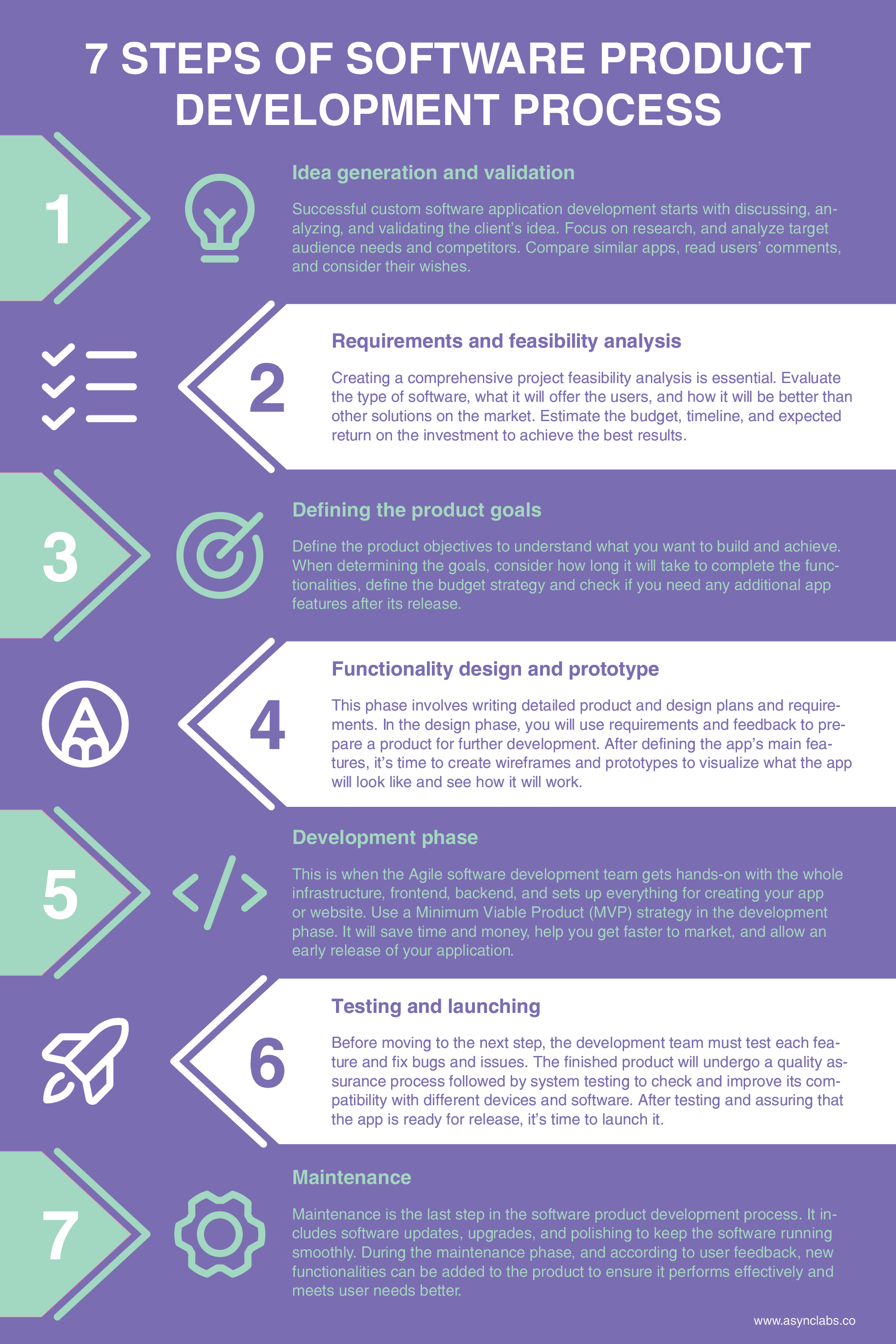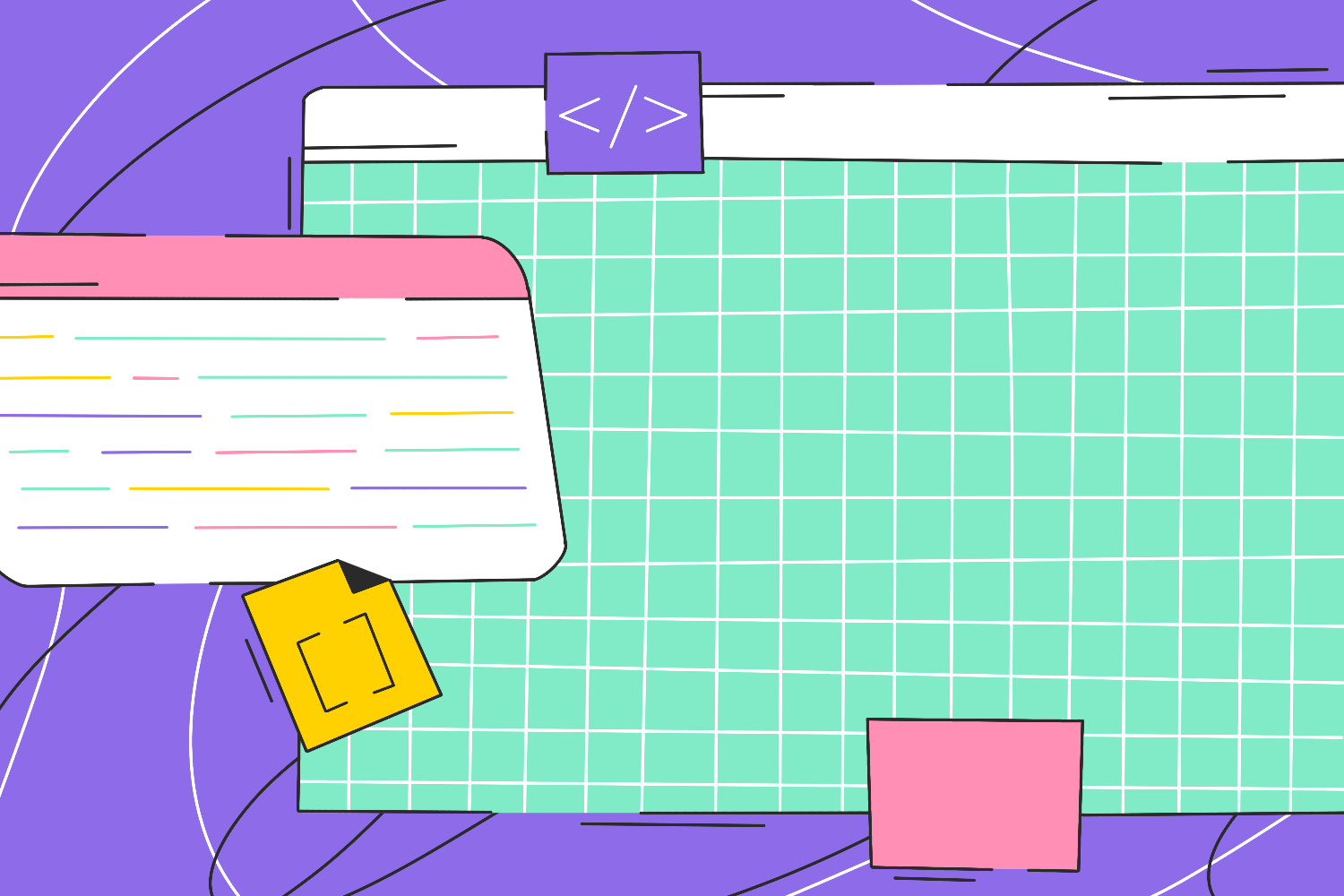Do you know what the software product development process looks like?
If you are a business owner, you know how challenging it is to run a business. As a business owner, you need to be constantly aware of the various trends and updates that make your processes more efficient, productive, and successful.
Software products have become a crucial part of our daily life. Moreover, they are one of the most significant achievements of human creation.
The custom software development scene has reached an enormous $70 billion valuation and is growing yearly by 5%.
Because of the constant development of the systems that use it, the software is getting more complex daily. In software development, everyone strives to deliver their products on time, with fewer bugs detected and more satisfied customers and buyers.
Following a series of systemic steps is critical to building a high-quality product that meets requirements and overcomes challenges.
How does a robust software product development process improve the quality of the end product and the overall development process?
This article will help you with all the details related to the software product development steps and everything you need to know to get the ball rolling with your project.
What is software product development?
From the idea to the market
Software product development is delivering a new product or improving an existing one.
The concept is much broader than just development and incorporates an entire product’s journey, from idea, analysis, engineering, design, and testing. It combines different tools, methodologies, and management techniques and includes all steps required to bring a unique experience to end-users.
A clear product development plan helps companies in a few ways:
- Determine what customers want in the early stages of conceptualization,
- Provides a way to explore new product ideas,
- Ensure the new or enhanced product satisfies real customer wishes and needs,
- Helps in reaching business goals.
The goal of software development is the production of quality software, in a given time, within the planned time, and budget, and meeting the real needs of the client.
The software product development process aims to create a sustainable product that can survive multiple market changes and bring tangible value to end customers.
Why does your business need software product development?
Today, every business needs and uses software development to accelerate growth and gain a competitive advantage. Still, software development is much more than having an app or a website. The well-integrated software can take your company to the next level.
Here are some reasons why software development is important for your business.
Business growth
Business growth is significant, but can you manage it effectively without affecting the quality of your products and services? The answer hides in business process management software.
Company growth requires increasing organizational effort and effective management. Product development can help you ensure the quality your customers demand, comply with government regulations, keep audit records, etc.
Speed up time-to-market
Software development takes your business to a new level and heights. It helps promote, market and spread your business by making your brand visible and recognizable worldwide. Whenever your customers are, they can access your software anytime.
Service improvement
Knowing how your customers think about your brand and products is essential. Suppose you want to understand customers’ opinions and connect to them. The answer is online marketing.
You have to let your customers easily reach out to you on different online platforms and express opinions about your products and services. This way, you will communicate directly with the clients, boost customer engagement, and increase your brand awareness faster.
If you find yourself reflecting on these signs, it might be the right time to start thinking about adopting a software solution that will allow you to run a healthier, more successful business.

Software product development process explained in 7 steps
The software product development process can be much more challenging than you think. It is a complex work consisting of many steps, from the initial user request, analysis, and construction to implementation and use.
Product development includes steps similar to those used to build any other product. It starts with researching and evaluating customer needs, design, development, testing, launching the product into the market, and maintenance.
Planning and implementing the right strategy require different skills when developing a digital product. That’s why it is essential to have an experienced project manager with an analytical mind.
Let’s follow the product development process step by step.

Idea generation and validation
What do you usually do to generate the idea? Do you go for a walk to cleanse your mind and manifest ideas or simply write them down in a notebook?
Successful custom software application development starts with discussing, analyzing, and validating the client’s idea. Focus on research, and analyze target audience needs and competitors. Look at similar applications and use them, read users’ comments, and consider their wishes.
Conduct a users’ opinion survey to identify the features and functions that distinguish your product, leading the app to success. The key is to provide a better solution than currently available.
When generating an idea, ask yourself the following questions to visualize how your solution will work in real life:
- What problem will the product solve, and how?
- Does the market need another health app, for example?
- What features of the app will make it stand out in the market?
- What is the target audience?
- How to make the product that customers will be willing to pay for?
Requirements and feasibility analysis
Can this project be completed on time, within budget, and with existing in-house expertise, or do you have to hire contractors?
Before starting software development, creating a comprehensive project feasibility analysis is essential. Evaluate what the software will offer the users, how it will be better than other solutions on the market, and estimate the budget, timeline, and expected return on the investment.
Requirements and feasibility analysis check whether the software you want to build is viable for your needs or requires changes before the design and development phase.
Feasibility and requirements analysis deals with technical, operational, and legal issues. It may reveal that some requirements are not the best for your business.
The goal is to analyze the infrastructure and capability of your team, and the type of software and plan everything according to regulations to achieve the best results and get a sustainable and cost-effective product.
Defining the product goals
Define the product objectives. What do you want to achieve with the development of the software app?
When determining the objectives, consider these few key points:
- How long will it take to complete the functionality?
- How will you use the software in your business?
- What is your budgeting strategy?
- Do you need any additional features in the app after its release?
Functionality design and prototype
The software design process starts with looking back at user research. This phase involves writing detailed product and design plans and requirements. In the design phase, you will use all requirements and feedback you got during the previous step. This will help you to organize your product for further development.
After you define the main features of your app, it’s time to prototype it.
First, create wireframes that reflect the product’s features and structure, and then create a prototype to visualize what the application will look like and see how it will work.
The prototype allows the client to see the web or mobile app interface design before the development process and for customers to test it.
Development phase
This is when the Agile software development team gets hands-on with the whole infrastructure, frontend, backend, and sets up everything for creating your app or website.
Team collaboration in Async Labs starts with a kick-off meeting. To keep up with high standards, we use Agile project management processes:
- We align tasks for the day ahead and overcome obstacles with daily meetings.
- We set goals and plan activities for the next sprint through sprint planning meetings.
- Evaluating and discussing the results that have been achieved during a sprint is a must-do thing on our list.
- We have backlog estimation meetings to dig into a sprint backlog, assess workloads, prioritize features, and plan how to implement them.
- We regularly hold sprint retrospectives to look back at the processes during the previous sprint and optimize them for the next one.
In this phase, a Minimum Viable Product (MVP) strategy can be used to help you get faster to market and allow an early release of your application. This approach will enable you to save time and money for developing and creating an application.
Sometimes, the development team may come across issues during the development process. When it happens, make sure to have a backup plan and ensure everything is going as planned if this happens.
Testing and launching
Before moving to the next step, the development team must test each feature and fix bugs and issues. After it is ready, the product will go through a quality assurance process followed by system testing to check and improve its compatibility with different devices and software.
Our quality assurance services at Async Labs are based on a predefined QA plan for a specific project. It describes the scope of testing and the actions needed for delivering an excellent product. We do manual and automated tests to detect failures and issues efficiently.
After testing, testing, more testing, and assuring that the app is ready for release, it is time to launch it. Before this step, it is essential to create a marketing plan or product promotion strategy.
Maintenance
Maintenance is the last step in the software product development process. It includes software updates, upgrades, and polishing to keep the software running smoothly.
During the maintenance phase, and according to user feedback, new functionalities can be added to the product to ensure it performs effectively and meets user needs better.
Step by step
There are many different frameworks that product teams follow to start the product development process. Most approaches advocate understanding customer needs, market research, prototyping, and testing ideas.
Determining the best approach for your business largely depends on the product. For example, hardware products might require more steps and different activities in the product development process than software solutions.
You have to stick to a step-by-step plan to move from one stage to another in product development software. Putting things in order is always essential when kicking off a new project.
Technology has much to offer in helping businesses become more successful, productive, and efficient. If you need to improve and grow your business, we can help you. Customize software product development with us and explore new avenues for your venture.
Are you ready to develop a successful digital product? Start now.
